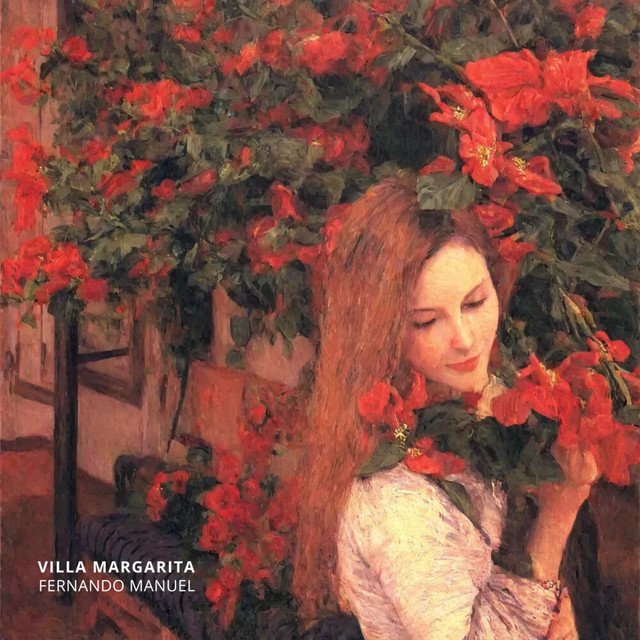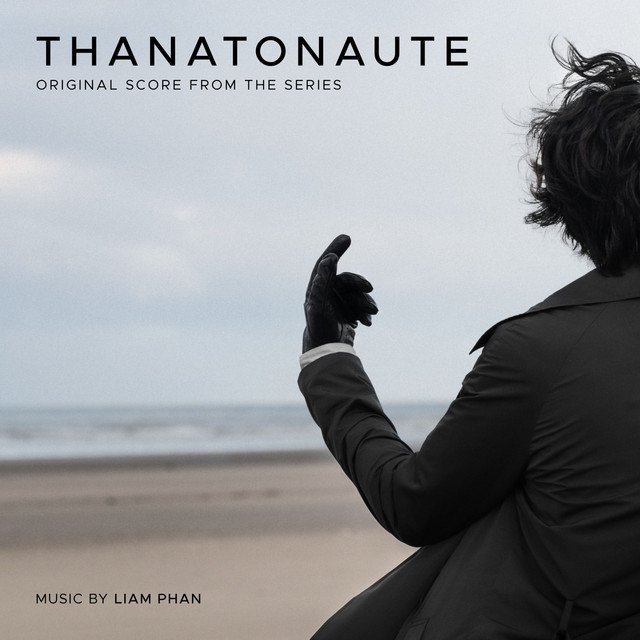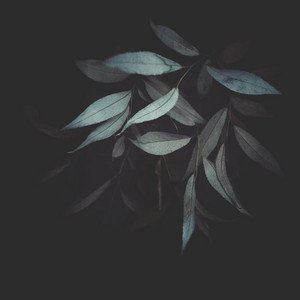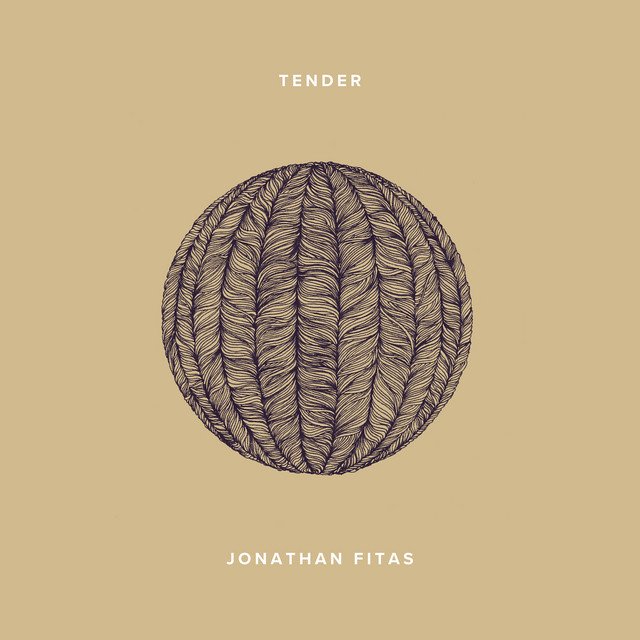Neoclassical Music ⁞ New Releases⁞ Artist Interviews⁞ Music News
Introduction of Neoclassical Music
Neoclassical music is a style of classical music that is characterized by its use of traditional forms and styles, as well as a focus on structure and balance. It is often seen as a reaction against the romantic style of music, which was characterized by emotion and passion, and was influenced by the ideas of the Enlightenment, which valued reason and classical learning.
Some of the key features of neoclassical music include the use of traditional forms such as sonata form, the use of clear and concise melodies, and the incorporation of elements of folk music and popular music. Neoclassical music also often featured a return to tonality, which is the use of a specific key or tonal center in a piece of music.
The neoclassical style has had a lasting influence on classical music, and it continues to be an important part of the classical repertoire
Favorite Neoclassical Music on Spotify
Favorite Neoclassical Videos on Youtube
Recent Neoclassical Interviews
Mark Sutton Interview on Nagamag
Nagamag:
What are the genres that describe better your music style?
Mark Sutton:
Spiritual
Orchestral
Easy Listening
Cinematic
Nostalgic
Nagamag:
Few words about your musical background and career?
Mark Sutton:
My family are mainly all musicians and music and theatre were encouraged growing up. I've not played live too many times, but one of my highlights was accompanying a ukulele player for the Cheltenham Jazz Festival a few years back.
My main aim is to get my music distributed to as many ears as possible. The positive feedback I receive about my tunes always spurs me on to do more.
Nagamag:
Do you remember your first connection of love to music that was the right impact to be a music artist now?
Mark Sutton:
When I was around 10 years old I remember starting to play the piano. I started creating some small tunes and my parents decided they would send me to have some piano lessons but after 6 months the teacher decided she could not teach me as I played by ear and once I had the tune in my head all the fingering was wrong.
Elton John, Scott Joplin and James P. Johnson were all great inspirers for me growing up.
Nagamag:
How has your music progressed over the years?
Mark Sutton:
Over the last 15 years in particular, my music has more or less been channeled. I sit at the piano and literally tune into my higher self and the tunes seem to flow from my fingers. I've also dabbled with orchestrating my tracks using Logic Pro and these seem to have been widely well received, although my first love and inspiration is from the piano.
Nagamag:
Do you favour a particular type of piano?
Mark Sutton:
At the moment I play a baby grand K.Kawai GL-30. I love the tone and speed of the notes from the way the keys are weighted, they seem to encourage me to play. I've had quite a few pianos over the years, Yamaha, Kaps and a Kemble/Mozart limited edition. All of which have played their part in helping me do mine.
Nagamag:
Most artists have a favorite song from a different music genre than the one they are producing music for... Which is yours?
Mark Sutton:
Supertramp "Logical Song"
Nagamag:
Of Course Nagamag would love to listen also which track from a similar artist you admire?
Mark Sutton:
Randy Newman "God's Song"
Chiara Dubey Interview on Nagamag
Nagamag:
What are the genres that describe better your music style?
Chiara Dubey:
My music is a crossover between alternative pop, dreamy electronic, and modern classical - a fusion of airy strings textures, electronic beats/ sound design and my voice.
Nagamag:
Few words about your musical background and career?
Chiara Dubey:
I sing since when I was a child and started playing the violin at the age of 5. As I grew up, it became clear to me that I wanted to become a professional musician and I chose to study classical music at the conservatoire, majoring in violin and composition. In parallel, I kept performing as a singer/songwriter on international stages - like the Eurovision national finale. In 2018 I left my homeland and moved to London, where I completed my Master studies in vocal performance. Now I am back in Switzerland where I focus on my project as a solo artist.
Nagamag:
Do you remember your first connection of love to music that was the right impact to be a music artist now?
Chiara Dubey:
On the weekends, when I was a child, I would have tea (chai tea) with my father in the morning. It was our little ceremony. While he would prepare the tea, I would play an old CD of Céline Dion, always the same one, and I would sing along with all the air that I had in my lungs. I remember it would fill me with an ecstatic feeling, the same one I still have now when I perform. I guess these were the first moments where I fell in love with music and that bond never broke.
Nagamag:
You just released your début album, Constellations. What is the idea behind it?
Chiara Dubey:
As a child, I would spend most of my summers in the mountains. Nights, away from the city lights were so dark and quiet, and the sky was a breathtaking, dusty explosion of stars. Other children and I would lay for hours on the grass, just staring at them - and eventually keeping count of the falling stars. I couldn’t avoid noticing, what an influence that sight would have on my thoughts. It would slowly detach me from my daily reality, my thoughts would drown in that deep universe and I would find myself wondering about life, about death, about time, about dreams. That awareness and wonder accompanied me through the years, as I grew. I wanted to create an album that would carry some of those feelings, which are a beautiful part of our human essence. They accompany us in our choices and habits, but our daily pattern somehow makes it difficult for us just to find that space, that quietness, which allows our mind to wonder and dream. I have the feeling that we often get lost in the fuss of our busy scheduled lives. With Constellations, I wanted to emulate the effect that the deep, starred skies have on me, and create an atmosphere that would invite people to evade their reality, just for a while.
Nagamag:
Your album also contains instrumentals, why this choice?
Chiara Dubey:
Classical music is an important part of my personality and I like to express myself just trough sound sometimes, trough compositions, without using words. In this album I really wanted to include this side of me as well, without fearing what the audience might expect from me. It also gives me the chance to perform with the violin on stage, from time to time!
Nagamag:
Most artists have a favorite song from a different music genre than the one they are producing music for... Which is yours?
Chiara Dubey:
Jon Hopkins "Emerald Rush"
Nagamag:
Of Course Nagamag would love to listen also which track from a similar artist you admire?
Chiara Dubey:
Aurora "Infections of a different kind"
Neoclassical Features
La última experiencia – Juan Pablo Fernández Ramos
“Serene and very beautiful ethereal melodies and gentle textures with this enchanting and soothing composition. Its harmonic structure brings depth of emotions with every sound. Enchanting and perfect progression will bring you closer to the realm of tranquility and inner peace. ”
-Nagamag.com
Expand to read review translations *
“Γαλήνιες και πολύ όμορφες αιθέριες μελωδίες και απαλές υφές με αυτή τη μαγευτική και καταπραϋντική σύνθεση. Η αρμονική του δομή φέρνει βάθος συναισθημάτων με κάθε ήχο. Η μαγευτική και τέλεια εξέλιξη θα σας φέρει πιο κοντά στο βασίλειο της ηρεμίας και της εσωτερικής γαλήνης. ”
-Nagamag.com
“Melodías etéreas serenas y muy hermosas y texturas suaves con esta composición encantadora y relajante. Su estructura armónica aporta profundidad de emociones con cada sonido. Una progresión encantadora y perfecta te acercará al reino de la tranquilidad y la paz interior. ”
-Nagamag.com
The original review of “Juan Pablo Fernández Ramos – La última experiencia” is written in the native language that is spoken by the dedicated, for this song, Nagamag’s Neoclassical reviewer and followed by two translations*, of which the one depends from the country of origin of the artist “Juan Pablo Fernández Ramos” (Spain) and the other one is translated to a different language than original review and the country of origin of the artist.
* Automatically Translated
Nagamag unveils the mesmerizing composition “La última experiencia”, an extraordinary creation of harmony and creativity that “Juan Pablo Fernández Ramos” offered to all of us. A Neoclassical song, which evoked an emotional voyage to our curator that desired to write down a unique review for “Juan Pablo Fernández Ramos – La última experiencia”. What also sets this song among the featured choices of Nagamag is the way that “La última experiencia” is enriched with Cinematic characteristics. “Juan Pablo Fernández Ramos – La última experiencia” is a rich music creation that deserves to be listened to again and again. Nagamag is honored to share this detailed music review by one of our experienced reviewers for Neoclassical music compositions. As always, Nagamag keeps up evaluating Neoclassical songs from across the globe, ensuring that all Neoclassical enthusiasts around the world have access to these auditory treasures .
Neoclassical home page where “Juan Pablo Fernández Ramos – La última experiencia” is hosted on Nagamag Music Magazine
Nagamag takes pride in supporting Neoclassical artists like “Juan Pablo Fernández Ramos”, providing music reviews and music discoveries like “La última experiencia”.
This music post about song “La última experiencia” by “Juan Pablo Fernández Ramos” is hosted in Neoclassical page on Nagamag.
There you can find similar Neoclassical artists to “Juan Pablo Fernández Ramos” and more Neoclassical, Cinematic songs like “La última experiencia” that have been carefully selected by Nagamag’s Neoclassical experienced curators and reviewed by Nagamag’s Neoclassical dedicated reviewers.
Learn everything about Neoclassical on Wikipedia
If you enjoyed “Juan Pablo Fernández Ramos – La última experiencia” but you have never listened before to any other Neoclassical song or you are interested in learning more about Neoclassical music gerne then click here to visit Neoclassical music page on Wikipedia.
Neoclassical music refers to a distinct style with common characteristics. Each genre carries its unique sound, instruments, and cultural influences. For a deeper understanding of Neoclassical music, Wikipedia provides comprehensive insights into its history, notable artists, and iconic works. Delve into the diverse and dynamic world of Neoclassical music through this valuable resource, broadening your knowledge around Neoclassical genre.
Villa Margarita – Fernando Manuel
“О, Villa Margarita – это великолепная композиция! Она словно переносит в эпоху неоклассицизма, наполнившуюся чувствами и эмоциями. С первых нот вы погрузитесь в атмосферу изысканности и благородства, словно окунулись в потрясающий, цветущий сад. Мелодия льется из инструментов словно ручей, создавая картины живописных пейзажей. Грациозные фортепианные фразы переплетаются с мягкими звуками струнных инструментов, создавая удивительное сочетание гармонии и красоты.”
-Nagamag.com
Expand to read review translations *
“Oh, Villa Margarita – this is a magnificent composition! It seems to take you back to the era of neoclassicism, filled with feelings and emotions. From the first notes you will be immersed in an atmosphere of sophistication and nobility, as if you have plunged into a stunning, blooming garden. The melody flows from the instruments like a stream, creating pictures of picturesque landscapes. Graceful piano phrases intertwine with the soft sounds of string instruments, creating an amazing combination of harmony and beauty.”
-Nagamag.com
“¡Oh, Villa Margarita, es una composición magnífica! Parece transportarte a la época del neoclasicismo, lleno de sentimientos y emociones. Desde las primeras notas te sumergirás en una atmósfera de sofisticación y nobleza, como si te hubieras sumergido en un impresionante jardín floreciente. La melodía fluye de los instrumentos como un arroyo, creando imágenes de paisajes pintorescos. Graciosas frases de piano se entrelazan con los suaves sonidos de los instrumentos de cuerda, creando una sorprendente combinación de armonía y belleza.”
-Nagamag.com
The original review of “Fernando Manuel – Villa Margarita
“ is written in the native language that is spoken by the dedicated, for this song, Nagamag’s Neoclassical reviewer and followed by two translations*, of which the one depends from the country of origin of the artist “Fernando Manuel
“ (Mexico) and the other one is translated to a different language than original review and the country of origin of the artist.
* Automatically Translated
Nagamag unveils the mesmerizing composition “Villa Margarita”, an extraordinary creation of harmony and creativity that “Fernando Manuel” offered to all of us. A Neoclassical song, which evoked an emotional voyage to our curator that desired to write down a unique review for “Fernando Manuel – Villa Margarita”. What also sets this song among the featured choices of Nagamag is the way that “Villa Margarita” is enriched with Piano characteristics. “Fernando Manuel – Villa Margarita” is a rich music creation that deserves to be listened to again and again. Nagamag is honored to share this detailed music review by one of our experienced reviewers for Neoclassical music compositions. As always, Nagamag keeps up evaluating Neoclassical songs from across the globe, ensuring that all Neoclassical enthusiasts around the world have access to these auditory treasures .
Neoclassical home page where “Fernando Manuel – Villa Margarita” is hosted on Nagamag Music Magazine
Nagamag takes pride in supporting Neoclassical artists like “Fernando Manuel”, providing music reviews and music discoveries like “Villa Margarita”.
This music post about song “Villa Margarita” by “Fernando Manuel” is hosted in Neoclassical page on Nagamag.
There you can find similar Neoclassical artists to “Fernando Manuel” and more Neoclassical, Piano songs like “Villa Margarita” that have been carefully selected by Nagamag’s Neoclassical experienced curators and reviewed by Nagamag’s Neoclassical dedicated reviewers.
Learn everything about Neoclassical on Wikipedia
If you enjoyed “Fernando Manuel – Villa Margarita” but you have never listened before to any other Neoclassical song or you are interested in learning more about Neoclassical music gerne then click here to visit Neoclassical music page on Wikipedia.
Neoclassical music refers to a distinct style with common characteristics. Each genre carries its unique sound, instruments, and cultural influences. For a deeper understanding of Neoclassical music, Wikipedia provides comprehensive insights into its history, notable artists, and iconic works. Delve into the diverse and dynamic world of Neoclassical music through this valuable resource, broadening your knowledge around Neoclassical genre.
Latest Neoclassical discoveries
Névtelen – Sphiiris
Όμορφα και απαλά η μελωδία σε πλησιάζει και σου φέρνει αναμνήσεις χαμένες μέσα στο χρόνο. Οι νότες του πιάνου με το μελαγχολ... >>> Read full review & listen to the song on Nagamag #neo #modernclassical #solopiano #sphiiris #belgium #nagamag #musicmagazine #musicreview #review
Endlessly – MKSTN
Η μαγεία της μελωδίας χαλαρώνει τις αισθήσεις και νιώθεις τις πληγές σου με ένα παράδοξο τρόπο να επουλώνονται. Μια υπέροχη α... >>> Read full review & listen to the song on Nagamag #neo #modernclassical #experimentalelectronic #mkstn #canada #nagamag #musicmagazine #musicreview #review
Deliverance – Liam Phan
Stunning and incredibly calming atmosphere of this piano beauty engage deeply within first notes. Harmonic structure and comp... >>> Read full review & listen to the song on Nagamag #piano #nagamag #musicmagazine #musicreview #review
Drifting In The Dark – Luca Mazzillo
Mesmerizing and melancholic mood that keeps gaining momentum as this piece progresses. With every piano note and the themes, ... >>> Read full review & listen to the song on Nagamag #neo #modernclassical #lucamazzillo #italy #nagamag #musicmagazine #musicreview #review
Single Waltz – Jean-Christophe Renault
Serene world of ethereal melodies of this gentle piano themes is really enchanting. Its harmonic piano structure brings depth... >>> Read full review & listen to the song on Nagamag #neo #modernclassical #solopiano #jeanchristopherenault #belgium #nagamag #musicmagazine #musicreview #review
Willow – Instrumental – Gifts From Crows
Flows brilliantly, great use of harmony, with many cinematic moments. The melody trades off with blissful lead strings and th... >>> Read full review & listen to the song on Nagamag # #giftsfromcrows #unitedkingdom #nagamag #musicmagazine #musicreview #review
Body And Soul – RB Waves of Jazz
Η ωραία και εκλεπτυσμένη μελωδία μας γεμίζει με θετική ενέργεια και κάνει τη μέρα μας να φαίνεται τόσο αισιόδοξη. Η ηρεμία τη... >>> Read full review & listen to the song on Nagamag #jazz #rbwavesofjazz #ukraine #nagamag #musicmagazine #musicreview #review
Tender – Jonathan Fitas
Serene and very beautiful ethereal melodies and gentle textures with this enchanting and soothing composition. Its harmonic s... >>> Read full review & listen to the song on Nagamag #electronica #nagamag #musicmagazine #musicreview #review
Epilogue – Arashk Azizi
Mesmerizing and incredibly calming atmosphere of this piano beauty engage deeply within first notes. Melancholic mood is done... >>> Read full review & listen to the song on Nagamag #neo #modernclassical #solopiano #arashkazizi #nagamag #musicmagazine #musicreview #review
Difference between Classical and Neoclassical Music
Classical music refers to a broad range of music written in the classical tradition, which encompasses a wide range of styles and forms. It is generally characterized by its formal structure and its use of traditional instruments and ensemble configurations.
Neoclassicism is a style of music that refers to the revival and use of classical forms and styles in music, particularly in the 18th and early 19th centuries. It is characterized by its use of clear, concise forms and a focus on structure and balance. Neoclassicism was a reaction against the romantic style of music, which was characterized by emotion and passion, and was influenced by the ideas of the Enlightenment, which valued reason and classical learning.
Some of the key differences between classical and neoclassical music include:
Time period: Classical music refers to music written during the classical period (1730-1820), while neoclassicism refers to music written after the classical period that incorporates elements of classical forms and styles.
Emphasis on structure: Classical music is known for its formal structure and the use of traditional forms such as the sonata and the symphony. Neoclassical music also places a strong emphasis on structure, but may also incorporate elements of popular music and folk music.
Emphasis on emotion: Classical music is often more reserved and formal in its emotional expression, while neoclassicism tends to be more emotional and expressive.
Use of tonality: Both classical and neoclassical music use tonality, but neoclassicism often incorporates a wider range of tonal structures and may experiment with atonality.
Use of traditional instruments: Both classical and neoclassical music use traditional classical instruments such as strings, woodwinds, brass, and percussion. However, neoclassicism may also incorporate elements of popular music and folk music, and may use a wider range of instruments.
Overall, the main difference between classical and neoclassical music is the time period in which the music was written, and the specific techniques and styles used by the composer. Classical music is generally more formal and reserved in its expression, while neoclassicism tends to be more expressive and may incorporate elements of popular music and folk music.
The most used instruments in Neoclassical Music
In neoclassical music, the most common instruments used are those found in the classical orchestra, including:
Strings: Violin, viola, cello, double bass
Woodwinds: Flute, oboe, clarinet, bassoon
Brass: Trumpet, French horn, trombone, tuba
Percussion: Timpani, snare drum, bass drum, cymbals, xylophone, marimba, triangle
Keyboard: Piano, harpsichord
These instruments are often used to create a wide range of textures and sounds, and are featured in many different types of classical music, including neoclassical music. In addition to these instruments, many composers also incorporate elements of popular music and folk music into their compositions, and may use a variety of other instruments such as guitars, bass, drums, and synthesizers.
It’s also worth noting that many composers and performers of neoclassical music are skilled in a variety of different instruments, and may switch between different instruments in order to achieve the desired sound and texture.
Vocals are sometimes used in neoclassical music, although they are not as common as instrumental music. When vocals are used in neoclassical music, they are typically performed by trained classical singers who have the ability to sing with precise pitch and control.
One common use of vocals in neoclassical music is in operatic compositions, where singers perform arias and recitatives in a style that is similar to traditional opera. Neoclassical opera is a subgenre of classical music that combines elements of traditional opera with elements of neoclassicism, and often incorporates elements of popular music and folk music.
In addition to operatic vocals, vocals may also be used in other forms of neoclassical music, such as choral music or vocal chamber music. Some composers may also incorporate elements of popular music or folk music into their compositions, and may use vocals in a more modern or experimental style.
It’s worth noting that the use of vocals in neoclassical music is highly dependent on the individual composer and the specific piece of music, and not all neoclassical compositions will feature vocals.













